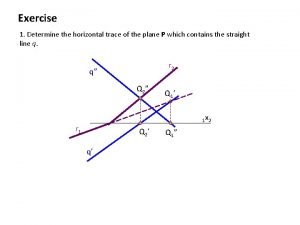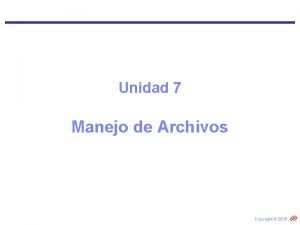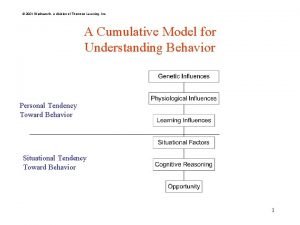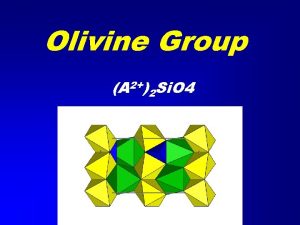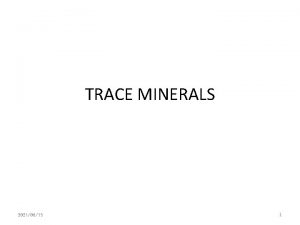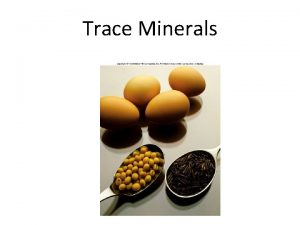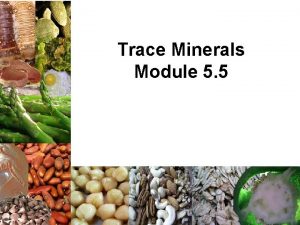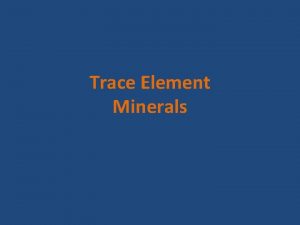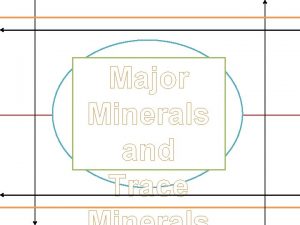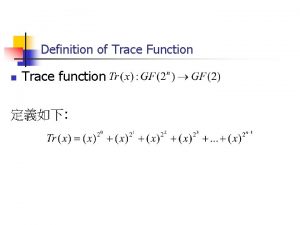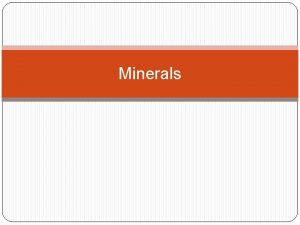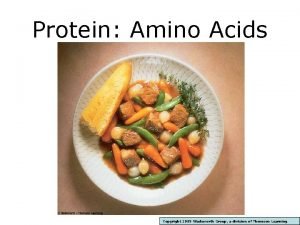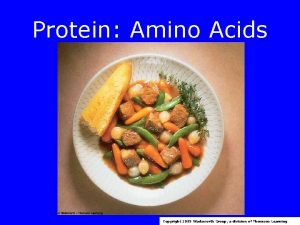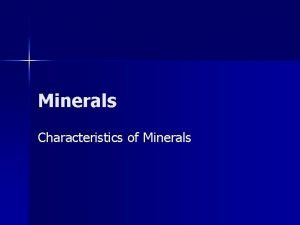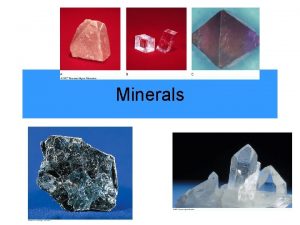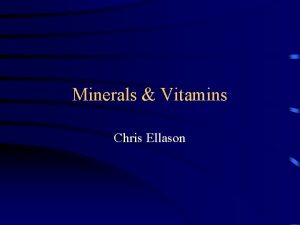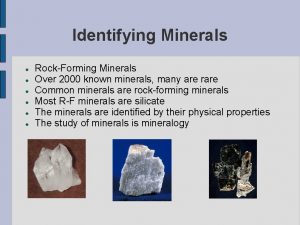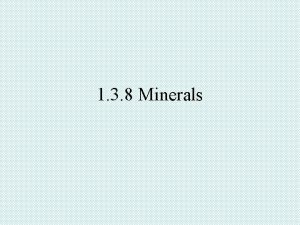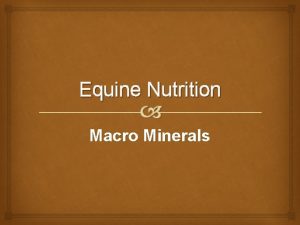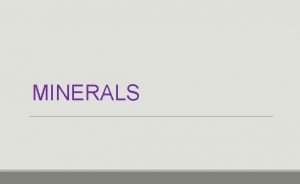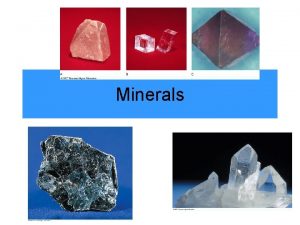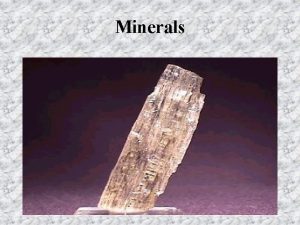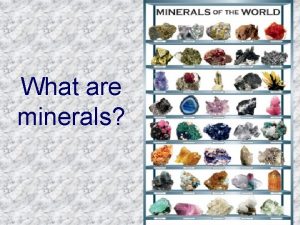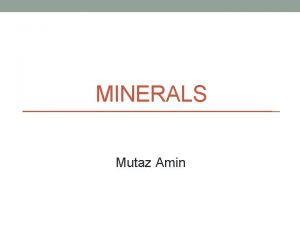The Trace Minerals Copyright 2005 Wadsworth Group a

































- Slides: 33

The Trace Minerals Copyright 2005 Wadsworth Group, a division of Thomson Learning

The Trace Minerals Copyright 2005 Wadsworth Group, a division of Thomson Learning

Trace Minerals Iron Iodine Fluoride Manganese Molybdenum Nickel Boron Zinc Selenium Copper Chromium Arsenic Silicon Cobalt

Iron • Ferrous (Fe++) – Reduced • Ferric (Fe+++) – Oxidized • Chief functions in the body – Part of the protein hemoglobin, which carries oxygen in the blood – Part of the protein myoglobin in muscles, which makes oxygen available for muscle contraction – Necessary for the utilization of energy as part of the cells’ metabolic machinery Copyright 2005 Wadsworth Group, a division of Thomson Learning

Iron Absorption Copyright 2005 Wadsworth Group, a division of Thomson Learning

Iron Sources – two forms of iron in food 1. Heme iron – meats, poultry, fish; readily absorbed 2. Nonheme iron – plants foods; less absorbed a. Absorption enhanced by Vitamin C b. Absorption diminished by phytates, oxalates, and tannic acid

Iron: Heme vs. Nonheme Copyright 2005 Wadsworth Group, a division of Thomson Learning

Iron • 2001 RDA – Men: 8 mg/day – Women (19 -50 years): 18 mg/day – Women (51+ years): 8 mg/day • Upper level for adults: 45 mg/day • Significant sources – Red meats, fish, poultry, shellfish, eggs – Legumes, dried fruits Copyright 2005 Wadsworth Group, a division of Thomson Learning


Iron • Iron deficiency is the most common nutrient deficiency worldwide • Can occur if inadequate intake or blood loss • Females are prone due to menstruation, lower iron intake & pregnancy • Preschoolers also at risk due to high milk diets Copyright 2005 Wadsworth Group, a division of Thomson Learning

Iron • Deficiency symptoms – Microcytic, hypochromic anemia (low Hgb & Hct): weakness, fatigue, headaches – Impaired work performance and cognitive function – Impaired immunity – Pale skin, nailbeds, mucous membranes, and palm creases – Concave nails – Inability to regulate body temperature – Pica (craving for ice, clay, paste, and other non-food substances) Copyright 2005 Wadsworth Group, a division of Thomson Learning

• Both size and color are normal in these blood cells • Blood cells in irondeficiency anemia are small and pale because they contain less hemoglobin

Iron • Toxicity – “iron overload”; more common in men -Hemochromatosis – genetic defect -Hemosiderosis – chronic ingestion of too much iron; more common in alcoholics -Iron poisoning – acute toxicity from overdose of iron supplements; can be deadly in small children • Toxicity symptoms – GI distress – Iron overload: infections, fatigue, joint pain, skin pigmentation, organ damage Copyright 2005 Wadsworth Group, a division of Thomson Learning

Zinc Chief functions in the body – Part of many enzymes, esp. enzymes for transfer of carbon dioxide – Associated with the hormone insulin – Involved in making genetic material and proteins – Important to wound healing, taste perception, reproduction (the making of sperm), vision (transports and activates Vit. A) & immune function Copyright 2005 Wadsworth Group, a division of Thomson Learning

Zinc • 2001 RDA – Men: 11 mg/day – Women: 8 mg/day • Upper level for adults: 40 mg/day • Significant sources – Protein-containing foods – Red meats, shellfish – Whole grains Copyright 2005 Wadsworth Group, a division of Thomson Learning


Zinc • Deficiency symptoms – In children, growth retardation and delayed sexual maturation – Impaired immune function – Hair loss – Eye and skin lesions – Loss of appetite and abnormal taste – Depressed immune function and poor wound healing - Night blindness

Zinc • Toxicity – not likely, unless supplement abuse • Toxicity symptoms – Loss of appetite, impaired immunity, low HDL, copper and iron deficiencies Copyright 2005 Wadsworth Group, a division of Thomson Learning

Iodine • Chief functions in the body – A component of two thyroid hormones that help to regulate growth, development, and metabolic rate • 2001 RDA for adults: 150 g/day • Upper level: 1100 g/day

Iodine • Significant sources – Iodized salt, seafood, bread, dairy products, plants grown in iodinerich soil and animals fed those plants (content of iodine in soils affects food content) Copyright 2005 Wadsworth Group, a division of Thomson Learning

Iodine • Deficiency disease -Simple goiter-enlarged thyroid; affects 200 million people worldwide -Creatinism- severe mental and physical retardation in infants • Deficiency symptoms – Underactive thyroid gland, goiter • Toxicity symptoms – Underactive thyroid gland, elevated TSH, goiter (also causes enlarged thyroid gland) Copyright 2005 Wadsworth Group, a division of Thomson Learning

Selenium • Chief functions in the body – Defends against oxidation – Regulates thyroid hormone • 2000 RDA for adults: 55 g/day • Upper level for adults: 400 g/day • Significant sources – Seafood, meat – Whole grains, vegetables (depending on soil content) Copyright 2005 Wadsworth Group, a division of Thomson Learning

Selenium • Deficiency symptoms – Predisposition to heart disease (cardiomyopathy) characterized by cardiac tissue becoming fibrous (Keshan disease) • Toxicity symptoms -Highly toxic, esp. supplement abuse – Loss and brittleness of hair and nails – Skin rash, fatigue, irritability, and nervous system disorders – Garlic breath odor Copyright 2005 Wadsworth Group, a division of Thomson Learning

Copper • Chief functions in the body – Component of enzymes involved in the absorption and use of iron in the formation of hemoglobin – Part of several enzymes necessary for collagen, healing wounds, maintaining nerve fiber’s myelin sheath • Upper level for adults: • 2001 RDA for adults: 900 g/day 10, 000 g/day (10 mg/day) Copyright 2005 Wadsworth Group, a division of Thomson Learning

Copper • Significant sources – Seafood – Nuts, whole grains, seeds, legumes • Deficiency symptoms (rare) – Anemia, bone abnormalities • Toxicity symptoms-only in supplement abuse & abnormal storage in Wilson’s disease -Liver damage Copyright 2005 Wadsworth Group, a division of Thomson Learning

Manganese • Chief functions in the body – Cofactor for several enzymes – Component of bones and glands • 2001 AI – Men: 2. 3 mg/day – Women: 1. 8 mg/day • Upper level for adults: 11 mg/day Copyright 2005 Wadsworth Group, a division of Thomson Learning

Manganese • Significant sources – Nuts, whole grains, leafy vegetables, tea • Deficiency symptoms – Rare; requirements are low • Toxicity symptoms – Nervous system disorders – Has occurred in miners inhaling large quantities of dust causes brain damage Copyright 2005 Wadsworth Group, a division of Thomson Learning

Fluoride • Chief functions in the body – Involved in the formation of bones and teeth – Helps to make teeth resistant to decay • 1997 AI – Men: 3. 8 mg/day – Women: 3. 1 mg/day • Upper level for adults: 10 mg/day Copyright 2005 Wadsworth Group, a division of Thomson Learning

Fluoride • Significant sources – Drinking water (if fluoride containing or fluoridated) – Tea, seafood • Deficiency symptoms – Susceptibility to tooth decay – Higher incidence of dental caries • Toxicity symptoms – Fluorosis (pitting and discoloration of tooth enamel) Copyright 2005 Wadsworth Group, a division of Thomson Learning

U. S. Population With Fluoridated Water Copyright 2005 Wadsworth Group, a division of Thomson Learning

Chromium • Chief functions in the body – Enhances insulin action – CHO & lipid metabolism • 2001 AI -Men: 35 g/day – Women: 25 g/day • Significant sources – Meats (especially liver) – Whole grains, brewer’s yeast Copyright 2005 Wadsworth Group, a division of Thomson Learning

Chromium • Deficiency symptoms – Diabetes-like condition; mimics symptoms of diabetes, especially in elderly • Toxicity symptoms – None reported Copyright 2005 Wadsworth Group, a division of Thomson Learning

Trace Minerals • Others – Molybdenum, Nickel, Cobalt, Silicon, Boron, Arsenic • Known to be important & essential for animals but human requirements under study • No recommendation is necessary since there is no evidence that intake by humans is ever limiting and unestablished roles in health maintenance
 Trace of a plane
Trace of a plane Pearson education inc publishing
Pearson education inc publishing Copyright 2005
Copyright 2005 2005 pearson prentice hall inc
2005 pearson prentice hall inc Copyright 2005
Copyright 2005 Copyright 2005
Copyright 2005 Copyright 2005
Copyright 2005 Copyright 2005
Copyright 2005 Pearson
Pearson Copyright 2005
Copyright 2005 Copyright 2005
Copyright 2005 Cog lab
Cog lab Wadsworth thomson learning
Wadsworth thomson learning Wadsworth/thomson learning
Wadsworth/thomson learning Thomson wadsworth
Thomson wadsworth Wadsworth cengage learning
Wadsworth cengage learning Henry wadsworth longfellow short biography
Henry wadsworth longfellow short biography Wadsworth
Wadsworth Hn wadsworth
Hn wadsworth Thomson wadsworth
Thomson wadsworth Wadsworth thomson learning
Wadsworth thomson learning Olivine group of minerals
Olivine group of minerals Hình ảnh bộ gõ cơ thể búng tay
Hình ảnh bộ gõ cơ thể búng tay Slidetodoc
Slidetodoc Bổ thể
Bổ thể Tỉ lệ cơ thể trẻ em
Tỉ lệ cơ thể trẻ em Chó sói
Chó sói Thang điểm glasgow
Thang điểm glasgow Hát lên người ơi alleluia
Hát lên người ơi alleluia Môn thể thao bắt đầu bằng chữ đua
Môn thể thao bắt đầu bằng chữ đua Thế nào là hệ số cao nhất
Thế nào là hệ số cao nhất Các châu lục và đại dương trên thế giới
Các châu lục và đại dương trên thế giới Cong thức tính động năng
Cong thức tính động năng Trời xanh đây là của chúng ta thể thơ
Trời xanh đây là của chúng ta thể thơ
